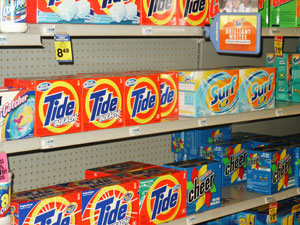 Many people, especially those with college-bound children, look forward to the annual issue of U.S. News and World Report that lists the top universities and colleges in the nation. Business-minded people eagerly await the latest issue of Fortune magazine, and the more literary among us look forward to reading the latest fiction in The New Yorker or Atlantic Monthly. At Home Energy magazine, where I work, some of us salivate over seeing a fresh copy of the Chemical & Engineering News (C&EN), a publication of the American Chemical Society, in our mailboxes. (Of course, we like "normal" magazines too.)
Many people, especially those with college-bound children, look forward to the annual issue of U.S. News and World Report that lists the top universities and colleges in the nation. Business-minded people eagerly await the latest issue of Fortune magazine, and the more literary among us look forward to reading the latest fiction in The New Yorker or Atlantic Monthly. At Home Energy magazine, where I work, some of us salivate over seeing a fresh copy of the Chemical & Engineering News (C&EN), a publication of the American Chemical Society, in our mailboxes. (Of course, we like "normal" magazines too.)
We especially like it when C&EN has a green-related cover story, as it did in the January 29, 2007 issue ("Going Green," p. 13). This story reported on how chemists, under pressure from consumers, legislators, and Wal-Mart, are creating laundry detergents that work well in cold water, use less volume than in the past, and contain fewer materials that are hazardous when they go down the drain and into California’s water supply. The C&EN article shows how the public-- you and I-- the government, and Wal-Mart can help shape our economy and move it in a more efficient and sustainable direction.
As a sign of the times, Proctor and Gamble recently took out an ad in the New York Times Magazine touting the green benefits of its laundry detergent, Tide Coldwater. The ad claims that if everyone in New York City washed in cold water for a day, it would save an amount of energy equal to that needed to light the Empire State Building for a month. Wal-Mart has singled out 20 chemicals harmful to the environment that it wants the companies who manufacture its products to avoid using. When a retailer the size of Wal-Mart tells companies that make laundry detergent and other cleaning products to avoid something, the companies tend to comply. And Wal-Mart is responding to the pressure put on them by consumers and the government to sell efficient, healthy, and sustainable products.
Henkel, a European detergent maker and Proctor and Gamble competitor, uses 35% natural, renewable soaps in its laundry detergents. Henkel's new laundry detergent, Persil Color, cleans clothes well at low temperatures, and its automatic dishwashing detergent, Somat 7, cleans as well at 104°F (40°C) as a previous detergent did at 131°F (55°C). Add up the savings from laundry and dishwashing and pretty soon PG&E or Southern California Gas and Electric decides it doesn’t have to build a new power plant in your city after all.
As consumers-- and face it, we are all consumers-- we can feel good about the fact that our opinions on everything from dishwashing soap to cool roofs matter to those who create the items that we consume. And even if you won’t run out and subscribe to C&EN believe it when you are at Safeway or Andronico's buying laundry detergent with advertising on the box that says you can use less of it in cold water to get your clothes just as clean. The entire American Chemical Society and Wal-Mart can't both be wrong.
